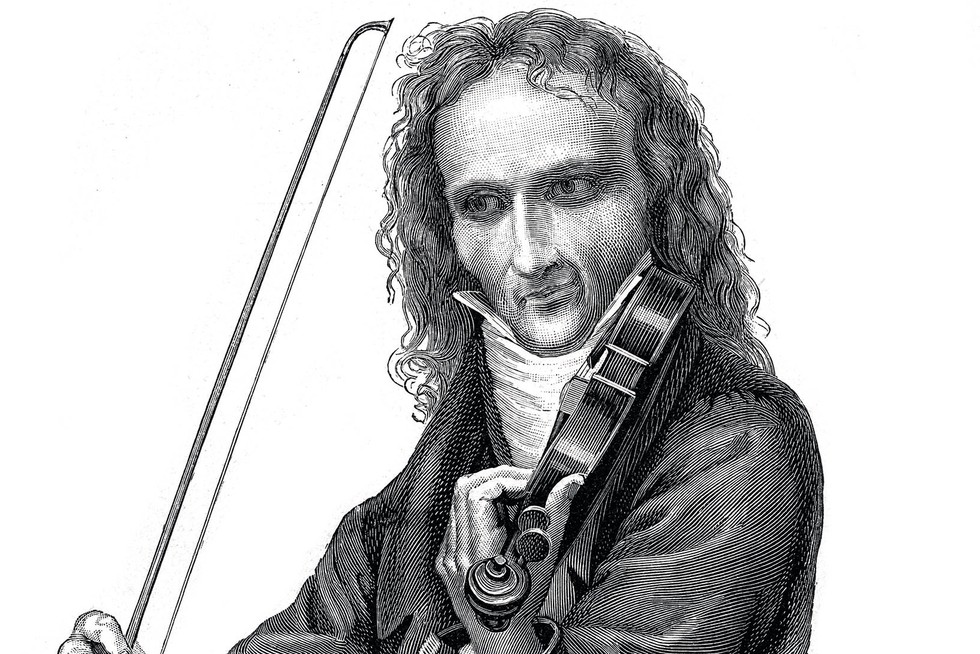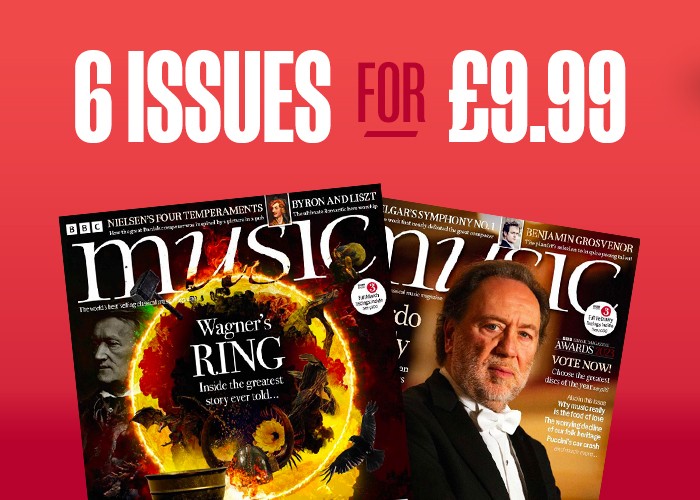Paganini's violin: a guide to the great Italian violinist's treasured Il Cannone
When Niccolò Paganini died, his Guarneri was locked away with only a select few allowed to play it. Francesca Dego is the latest lucky one, discovers Julian Haylock

The value of high-quality violins has soared in recent years, especially those made by Cremonese makers Antonio Stradivari (1644-1737) and Giuseppe Guarneri (1698-1744). The latter, known as ‘del Gesù’ – due to the cross motif found on his later instruments – is widely considered the finest of all luthiers.
His violins, of which less than 200 have survived, are prized for their lustrous sound and luminous tonal colours. Little wonder one of his sublime instruments holds the current auction record of $16 million reportedly paid for the ‘Vieuxtemps’ Guarneri, named after the great Belgian player-composer who once owned it and currently on loan for life to the American violinist Anne Akiko Meyers.
Which violin became known as Paganini's violin?
Yet there is one Guarneri ‘del Gesù’ of such legendary renown that it is kept guarded under lock and key in Genoa’s Palazzo Doria Tursi: Il Cannone, crafted in 1743 and the main instrument of the great Niccolò Paganini (1782-1840). This priceless violin is allowed out of its glass display cabinet just once a month for a warm-up by the curator to keep it played in.
What happened to Paganini's violin?
During his playing career, Paganini amassed an extraordinary collection of instruments, including no fewer than 11 Strads (one of which went on to be played by Pablo de Sarasate), two further Guarneri (one, dated 1740, subsequently owned by Fritz Kreisler) and two instruments by Nicolò Amati (1596-1684). Yet it was Il Cannone that proved to have such irresistible tonal lustre and allure that Paganini considered it his fifth limb. As an act of generosity, he bequeathed it to his home city of Genoa, which has been Il Cannone’s official guardian since 1851.
- Six of the best works by Paganini
- What makes the 1741 'Kreisler' Guarneri violin so special?
- Which performers currently own Stradivarius violins and how much are they worth?
- Four of the most famous violins ever made – and who owns them now
- Five famous people who played the violin...and one who didn't
Today, such instruments are the preserve of the insanely wealthy, but remarkably Paganini was gifted it by an admirer. Legend has it that, having mislaid his own instrument in Livorno while on tour, Paganini was loaned Il Cannone by the admirer who was so awestruck by his playing that he gave him the precious violin, as he could not bear the idea of ‘profaning the instrument after you had played it.’ Shortly afterwards, Paganini almost lost the priceless instrument in a card game of chance and was so shaken that he was forever cured of his gambling habit.
Paganini's relationship with the Il Cannone
Paganini enjoyed an almost symbiotic relationship with Il Cannone, achieving an incandescent level of virtuosity when he played it. This meant that on occasion – such a thing would be unthinkable today – Il Cannone was submitted to his trademark scissoring of strings (starting with the top E) designed to show that he could play finger-crippling pieces on the low G string alone.
There were also several types of ‘thrown’ bow-strokes that involved ricocheting the bow, occasionally with such abandon that Guarneri’s special varnish – which enhanced both the violin’s visual allure and its tonal properties – must have taken quite a bashing.
Yet away from the concert stage, Paganini was deeply devoted to Il Cannone and took great to ensure it came to no harm. Accidents do happen, however, and according to one particular story, the violin (in its case) took a tumble from a horse-drawn carriage on a cobbled Parisian street.
Pale-faced, Paganini made for the most illustrious luthier in town, Jean-Baptiste Vuillaume, and apparently let out agonised cries as the Frenchman repaired it. Vuillaume was so amazed by Il Cannone’s properties that he made an exact replica, so exquisitely crafted that even Paganini had trouble in distinguishing it from the original – this eventually went to Paganini’s only known pupil, Camillo Sivori (1817-94).
Paganini died before recording technology had become available, so we have only the impassioned testimony of his contemporaries from which to judge the impact of his playing of Il Cannone.
‘I never knew that music contained such sounds,’ reported the German poet Heinrich Rellstab following Paganini’s 1829 Berlin debut. ‘Paganini is the incarnation of desire, scorn, madness and burning pain.’ Something of Il Cannone’s unique tonal properties can be gleaned from Castil-Blaze’s review of an 1831 concert in the Journal des Debats: ‘[Paganini] took up an idea where the trumpets had just left it and rendered it in harmonics in such a way as it seemed as though the same instrument was playing.’
Does anyone play Paganini's violin today?
It has become a tradition for the winner of the now biennial Paganini Competition to give a celebratory concert playing Il Cannone, and occasionally it is allowed out on loan to distinguished players. Yet the one quality that shines through, no matter who is playing the instrument – whether Shlomo Mintz or Salvatore Accardo – is its sheer volume of sound. No wonder Paganini nicknamed it ‘The Cannon’.
Over time, Il Cannone underwent so many repairs and adjustments that the millennium it had become challenging to play. In 2000, luthier Bruce Carlson began returning the instrument to its early 19th-century heyday, when Paganini first came into contact with it.
One of things that became immediately apparent was Il Cannone’s longer-than-usual body, which would have suited the tall, long-limbed Italian. By making the distances between notes fractionally larger, it would have helped facilitate intonation in some of his high passagework. Violin expert Peter Sheppard Skaerved went even further by playing Il Cannone with original gut strings, and discovered that not only did they produce a greater range of tonal shadings, but that various hand positions on different strings possessed their own timbral identity – which explains the distinctive registral shifts in Paganini’s music.
The most recent recorded encounter with Il Cannone features the young Italian virtuoso Francesca Dego whose first release for Chandos features repertoire, from Rossini to Schnittke, that pays homage to Paganini. The recording came about as a result of an invitation from the City Council of Genoa and Teatro Carlo Felice (with the support of the Enzo Hruby Foundation) to perform on Il Cannone at a special concert in October 2019 to celebrate Paganini’s birthday.
‘It was an incredible honour to perform on this legendary instrument,’ Dego beams, ‘especially as I had the enthusiastic support of Bruce Carlson, conservator and restorer of Il Cannone, who supervised everything. I was also accompanied by a security team of six, who never left the room during the recording and were on stage with me during the performance! At first it felt intimidating, but by the end of the week we were sharing pizza and good laughs.’
To what extent had Dego been able to adapt Il Cannone to suit her own playing style? ‘I had carte blanche as far as strings were concerned,’ she explains, ‘so I decided on reliable, synthetic ones that I knew would respond and adapt quickly. I was worried about all the playing variables one faces when playing an instrument that spends most of its time in a cabinet, but I have to say I found Il Cannone to be in remarkably good health and raring to go! Mind you, it is notoriously a bit moody, so it can feel different quite suddenly until you get the measure of it. It warmed and opened up to me, becoming easier to play as
the days went by, although I was startled by its sheer power and projection from the moment I picked it up.’
Every violin has its own unique tonal properties, often with a ‘sweet spot’ where the instrument sounds at its happiest and a ‘wolf’ tone which, especially when sounded at low dynamic levels, has a tendency to blur the core pitch with overtones.
It would seem that not even the most famous violin ever made is free of such acoustical properties, as Dego points out: ‘Il Cannone is not only powerful, but it is the epitome of everything one expects from a top-class del Gesù. The depth and warmth in the lower register and the glorious ringing E string had me besotted.
That said, it does not easily give of its best – distances between notes are not as expected, it has an infamous “wolf” sound on the high C on the G string and it reacts negatively if you try too hard. For me, everything started working magically when I let it breathe and listened to each tiny response. This meant not using too much bow pressure, to avoid suffocating its overtones, and looking for ways to make every small movement, shift and string-change truly effective, rather than merely showy.’
More like this
And what about Paganini’s flying spiccato, multiple-stopping, chains of harmonics and such like – is Il Cannone well suited to acrobatics? ‘It’s definitely one of the finest instruments I’ve ever touched. I have always considered encountering a great instrument like that of a great colleague: the giving and exploring goes both ways. Some effects work wonderfully on Il Cannone, including double harmonics, which are often a nightmare. I was overwhelmed by the thought that I was exploring and communing with Paganini’s soul – playing the instrument he invented those effects on, and which, I’m sure, was a constant source of inspiration for him.
‘When I chose the repertoire for my recording, the idea was to pay homage to Paganini through the music of composers who idolised him as well as giving listeners the chance to hear Il Cannone in musical contexts it hadn’t yet explored.’
And for every violin and violinist there is also the perfect bow. Dego used her ‘gorgeous’ Dominique Peccatte (1810-74), the prince of bow-makers, ‘which feels like part of my arm. I’m sure Paganini would have liked it too!’
‘Il Cannone – Francesca Dego plays Paganini’s violin’ Chandos (CHAN 20223)
Authors

Julian Haylock is the former editor of CD Review and International Piano Magazines and reviews of CD Classics Magazine. He is also the author of biographies on Mahler, Rachmaninov and Puccini, and co-author of the Haylock and Waugh pocket guides to Classical Music on CD and Opera Music on CD.




